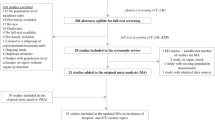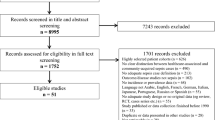Abstract
Purpose of the Review
Sepsis remains a leading cause of pediatric deaths worldwide. The lack of adherence to internationally recognized care guidelines has made this area ripe for quality improvement (QI). The last decade has seen a surge in sepsis-related QI work from local to national levels which will have significant implications for pediatric health outcomes.
Recent Findings
Thoughtfully developed quality of care measures pertaining to the assessment and management of pediatric sepsis are instrumental to identifying and addressing gaps in care. Key drivers include timely recognition and rapid delivery of essential treatments, and therefore, the majority of QI work to date has focused on systematic screening and protocolized bundled care.
Summary
QI efforts in pediatric sepsis continue to evolve as new evidence and technologies emerge. Ongoing local efforts have been strengthened by multicenter collaboratives which have focused on standardizing definitions and harnessing the power of electronic health records (EHR) to improve data collection and reporting.

Similar content being viewed by others
References and Recommended Reading
Papers of particular interest, published recently, have been highlighted as: • Of importance •• Of major importance
Balamuth F, Weiss SL, Neuman MI, Scott H, Brady PW, Paul R, et al. Pediatric severe sepsis in U.S. children’s hospitals. Pediatr Crit Care Med. 2014;15:798–805.
Hartman ME, Linde-Zwirble WT, Angus DC, Watson RS. Trends in the epidemiology of pediatric severe sepsis. Pediatr Crit Care Med. 2013;14:686–93.
Ruth A, McCracken CE, Fortenberry JD, et al. Pediatric severe sepsis: current trends and outcomes from the pediatric health information systems database. Pediatr Crit Care Med. 2014;15(9):828–38.
• Goldstein B, Giroir B, Randolph A, et al. International pediatric sepsis consensus conference: definitions for sepsis and organ dysfunction in pediatrics. Pediatr Crit Care Med. 2005;6:2–8 Original consensus definitions for SIRS, sepsis, severe sepsis and septic shock. The majority of published sepsis studies refer to the 2005 nomenclature in this paper. Formal revisions to the 2005 pediatric sepsis definitions remain pending.
Carcillo JA, Fields AI. American College of Critical Care Medicine Task Force Committee Members: clinical practice parameters for hemodynamic support of pediatric and neonatal patients in septic shock. Crit Care Med. 2002;30:1365–78.
Kleinman ME, de Caen AR, Chameides L, et al. Pediatric basic and advanced life support: 2010 international consensus on cardiopulmonary resuscitation and emergency cardiovascular care science with treatment recommendations. Pediatrics 2010;126:e1261.
Brierley J, Carcillo JA, Choong K, et al. Clinical practice parameters for hemodynamic support of pediatric and neonatal septic shock: 2007 update from the American College of Critical Care Medicine. Crit Care Med. 2009;37(2):666–88.
•• Davis AL, Carcillo JA, Aneja RK, Deymann AJ, Lin JC, Nguyen TC, et al. American College of Critical Care Medicine clinical practice parameters for hemodynamic support of pediatric and neonatal septic shock. Crit Care Med. 2017;45:1061–93 Most recent update to the ACCM practice parameters; Provides a narrative review of available evidence and presents an algorithmic time-specific approach to the management of children with septic shock.
Han YY, Carcillo JA, Dragotta MA, Bills DM, Watson RS, Westerman ME, et al. Early reversal of pediatric-neonatal septic shock by community physicians is associated with improved outcome. Pediatrics. 2003;112(4):793–9.
Weiss SL, Fitzgerald JC, Balamuth F, Alpern ER, Lavelle J, Chilutti M, et al. Delayed antimicrobial therapy increases mortality and organ dysfunction duration in pediatric sepsis. Crit Care Med. 2014;42(11):2409–17.
Carcillo JA, Kuch BA, Han YY, Day S, Greenwald BM, McCloskey KA, et al. Mortality and functional morbidity after use of PALS/APLS by community physicians. Pediatrics. 2009;124(2):500–8.
• Balamuth F, Weiss SL, Fitzgerald JC, et al. Protocolized treatment is associated with decreased organ dysfunction in pediatric severe sepsis. Pediatr Crit Care Med. 2016;17(9):817–22 Single center retrospective study demonstrates that use of a protocolized ED sepsis guideline to organize acute care therapies is independently associated with resolution of organ dysfunction by hospital day 2 and shorter hospital LOS compared to non-protocolized usual care.
•• Weiss SL, Peters MJ, Alhazzani W, et al. Surviving Sepsis Campaign International guidelines for the management of septic shock and sepsis-associated organ dysfunction in children. Pediatr Crit Care Med. 2020;21(2):e52–e106 First pediatric-specific guidelines released by the Surviving Sepsis Campaign. The guidelines provide graded evidence-based recommendations intended to inform best practice when caring for children with septic shock and sepsis-associated organ dysfunction.
Thompson GC, Macias CG. Recognition and management of sepsis in children: practice patterns in the emergency department. J Emerg Med. 2015;49:391–9.
Auerbach M, Whitfill T, Gawel M, Kessler D, Walsh B, Gangadharan S, et al. Differences in the quality of pediatric resuscitative care across a Spectrum of emergency departments. JAMA Pediatr. 2016;170(10):987–94.
Kessler DO, Walsh B, Whitfill T, INSPIRE ImPACTS investigators, et al. Disparities in adherence to pediatric sepsis guidelines across a spectrum of emergency departments: a multicenter, cross-sectional observational in situ simulation study. J Emerg Med. 2016;50(3):403–15.
Scott H, Greenwald E, Bajaj L, et al. The sensitivity of physician diagnosis of sepsis in tertiary and community based emergency setting. J Pediatr. 2018;195:220–7.
Paul R, Neuman MI, Monuteaux MC, Melendez E. Adherence to PALS sepsis guidelines and hospital length of stay. Pediatrics. 2012;130:e273–80.
Oliveira CF, Nogueira de Sá FR, Oliveira DSF, et al. Time- and fluid-sensitive resuscitation for hemodynamic support of children in septic shock: barriers to the implementa- tion of the American College of Critical Care Medicine/pediatric advanced life support guidelines in a pediatric intensive care unit in the developing world. Pediatr Emerg Care. 2008;24(12):810–5.
Larsen GY, Mecham N, Greenberg R. An emergency department septic shock protocol and care guideline for children initiated at triage. Pediatrics. 2011;127:e1585–92.
Cruz AT, Perry AM, Williams EA, Graf JM, Wuestner ER, Patel B. Implementation of goal-directed therapy for children with suspected sepsis in the emergency department. Pediatrics. 2011;127:e758–66.
•• Paul R, Melendez E, Stack A, et al. Improving adherence to PALS septic shock guidelines. Pediatrics. 2014;133:e1358–66 Describes the successful use of QI methodology to design, implement and sustain a local initiative to improve adherence to all components of PALS septic shock guidelines.
•• Evans I, Phillips G, Alpern E, et al. Association Between the New York Sepsis Care Mandate and In-Hospital Mortality for Pediatric Sepsis. JAMA. 2018;320(4):358–67 Statewide cohort study shows that completion of a 1-hour bundle of blood cultures, broad-spectrum antibiotics, and a 20-mL/kg intravenous fluid bolus is associated with lower risk-adjusted in-hospital mortality among patients with pediatric sepsis and septic shock.
• Paul R, Melendez E, Wathen B, et al. A Quality Improvement Collaborative for Pediatric Sepsis: Lessons Learned. Pediatr Qual Saf. 2018;3(1):e051 Study describes the structure and aims of the first multi-institution rapid cycle improvement collaborative for pediatric septic shock and highlights challenges faced.
Niedner M, Macias C, Richardson T et al. Sepsis Outcomes in a Multicenter Children’s Hospital Quality Improvement Collaborative. Abstract presented at The Society of Critical Care Medicine’s (SCCM) critical care congress. 2020; Orlando Florida.
Paul R et al. Improving Pediatric Sepsis Outcomes Collaborative- QI variable and metric development. Poster presentation at Pediatric Academic Society Meeting. 2019; Baltimore MD.
Huskins C, Larsen G, Paul R et al. Improving Pediatric Sepsis Outcomes Collaborative- Development and Implementation of Interventions. Poster presentation at Pediatric Academic Society Meeting. 2019; Baltimore MD.
Scott, H, Paul R et al. Improving Pediatric Sepsis Outcomes Collaborative- Defining Pediatric Sepsis for Large-Scale Electronic Health Record Case Identification in Multicenter Quality Improvement. Podium presentation at Pediatric Academic Society Meeting. 2019; Baltimore MD.
Stang AS, Straus SE, Crotts J, Johnson DW, Guttmann A. Quality indicators for high acuity pediatric conditions. Pediatrics. 2013;132(4):752–62.
• Odetola FO, Freed G, Shevrin C, et al. In-Hospital Quality-of-Care Measures for Pediatric Sepsis Syndrome. Pediatrics. 2017;140(2):e20170350 Multisite study describes the development and validation of quality measures for the recognition and treatment of in-hospital pediatric sepsis.
Hoffman JM, Keeling NJ, Forrest CB, Tubbs-Cooley HL, Moore E, Oehler E, et al. Priorities for pediatric patient safety research. Pediatrics. 2019;143(2):e20180496.
Stoner MJ, Mahajan P, Bressan S, Lam SHF, Chumpitazi CE, Kornblith AE, et al. Pediatric Emergency Care Research Networks: A Research Agenda. Acad Emerg Med. 2018;25(12):1336–44.
Woods JM, Scott HF, Mullan PC, Badolato G, Sestokas J, Sarnacki R, et al. Using an e-learning module to facilitate sepsis knowledge acquisition across multiple institutions and learner disciplines. Pediatr Emerg Care. 2019. https://doi.org/10.1097/PEC.0000000000001902.
Bradshaw C, Goodman I, Rosenberg R, et al. Implementation of an inpatient pediatric sepsis identification pathway. Pediatrics. 2016;137:1–8.
Cruz AT, Williams EA, Graf JM, Perry AM, Harbin DE, Wuestner ER, et al. Test characteristics of an automated age- and temperature-adjusted tachycardia alert in pediatric septic shock. Pediatr Emerg Care. 2012;28:889–94.
Balamuth F, Alpern ER, Grundmeier RW, Chilutti M, Weiss SL, Fitzgerald JC, et al. Comparison of two sepsis recognition methods in a pediatric emergency department. Acad Emerg Med. 2015;22:1298–306.
• Balamuth F, Alpern ER, Abaddessa MK, et al. Improving recognition of pediatric severe sepsis in the emergency department: contributions of a vital sign-based electronic alert and bedside clinician identification. Ann Emerg Med. 2017;70:759–68 Describes a quality improvement effort involving the prospective implementation of a 2 step sepsis identification tool, an electronic alert and a clinician bedside assessment, to identify patients with severe sepsis and septic shock in a pediatric ED. Underscores the critical importance of clinician assessment of alert-negative patients.
Fleuren LM, Klausch TLT, Zwager CL, Schoonmade LJ, Guo T, Roggeveen LF, et al. Machine learning for the prediction of sepsis: a systematic review and meta-analysis of diagnostic test accuracy. Intensive Care Med. 2020;46(3):383–400.
Masino AJ, Harris MC, Forsyth D, Ostapenko S, Srinivasan L, Bonafide CP, et al. Machine learning models for early sepsis recognition in the neonatal intensive care unit using readily available electronic health record data. PLoS One. 2019;14(2):e0212665.
Le S, Hoffman J, Barton C, Fitzgerald JC, et al. Pediatric severe sepsis prediction using machine learning. Front Pediatr. 2019;7:413.
Scott H, Colborn KL, Sevick CJ, et al. Development and validation of a predictive model of the risk of pediatric septic shock using data known at the time of hospital arrival. J Pediatr. 2020;217:145–51.
Akcan Arikan A, Williams EA, Graf JM, et al. Resuscitation Bundle in Pediatric Shock Decreases Acute Kidney Injury and Improves Outcomes. J Pediatr. 2015;167:1301–1305.e1.
Stoner MJ, Goodman DG, Cohen DM, Fernandez SA, Hall MW. Rapid fluid resuscitation in pediatrics: testing the American College of Critical Care Medicine guideline. Ann Emerg Med. 2007 Nov;50(5):601–7.
• Lane RD, Funai T, Reeder R, Larsen GY. High reliability pediatric septic shock quality improvement initiative and decreasing mortality. Pediatrics. 2016;138(4) Describes one institution’s experience of implementing and sustaining a longitudinal iterative QI program to improve septic shock recognition and treatment.
Author information
Authors and Affiliations
Corresponding author
Additional information
Publisher’s Note
Springer Nature remains neutral with regard to jurisdictional claims in published maps and institutional affiliations.
This article is part of the Topical Collection on Patient Safety
Rights and permissions
About this article
Cite this article
Schonfeld, D., Paul, R. Sepsis: an Update on Current Improvement Efforts. Curr Treat Options Peds 6, 366–376 (2020). https://doi.org/10.1007/s40746-020-00212-5
Published:
Issue Date:
DOI: https://doi.org/10.1007/s40746-020-00212-5




